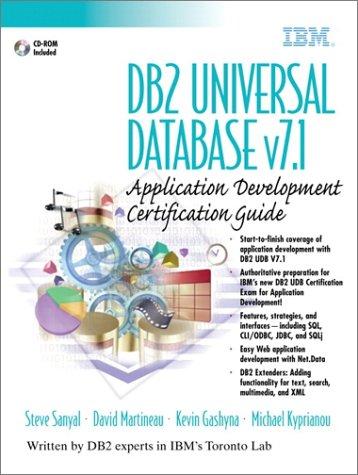Question
You will develop classes called ATM(Driver class) and Customer that simulate an imaginary automated teller machine (ATM). In the assignment, you should also develop a
You will develop classes called ATM(Driver class) and Customer that simulate an imaginary automated teller machine (ATM). In the assignment, you should also develop a UML class diagram for the ATM class.
NOTE: NEED A DRIVER IN ONE OF THE CLASSES
In the program, we assume that an ATM initially keeps $100.00 cash for customer transactions. Additionally, we assume that there are total ten customers combined for the OUBank and BOA banks. This is a list of customers with their names, PINs, balances, and banks they have.
Alice, 1234, $5000.00, OUBank
Tom, 2000, $200.00, OUBank
Monica, 3000, $50.00, OUBank
Michael, 7777, $0.00, OUBank
John, 8000, $500.00, OUBank
Jane, 2222, $500.00, OUBank
Robert, 2323, $200.00, BOA
Owen, 4455, $50.00, BOA
Chris, 8787, $10.00, BOA
Rebecca, 8080, $555.55, BOA
Demo Program
The following program presents a demo program that uses the ATM and Customer classes.
public class ATMDemo
{
public static void main(String[] args)
{
ATM machine1 = new ATM(OUBank);
ATM machine2 = new ATM(200, BOA, Library);
Customer alice;
System.out.println("===== Welcome to Demo Program =====");
System.out.println(machine1); System.out.println();
System.out.println(machine2);
System.out.println(" ===== Equality Checking =====");
System.out.println(machine1.equals(machine2));
System.out.println();
machine1.setATM(100, BIT);
machine1.addFund(400);// In this method, we assume that an ATM machine
// administrator adds $400 more cash to the machine.
System.out.println(machine1);
System.out.println();
machine1.displayMenu()
machine1.withdrawal(Alice, 7777, 10.50); // In the method, we assume
// that the customer Alice wants $10.50 withdrawal with PIN 7777.
machine1.withdrawal(Robert, 2323, 10.50);
machine1.withdrawal(Alice, 1234, 10000);
machine1.withdrawal(Alice, 1234, 10);
machine1.withdrawal(Alice, 1234, 2000);
System.out.println(" ===== Machine Status =====");
machine1.status();
System.out.println();
if (machine1.isCustomer(Alice)) {
alice = machine1.getCustomer(Alice);
System.out.println(alice);
System.out.println();
}
machine1.deposit(Alice, 1234, 10); // In the method, we assume that
// Alice conducts the cash deposit $10
// to the machine with PIN 1234.
System.out.println(" ===== Machine Status =====");
machine1.status();
System.out.println();
//The following method conducts a money transfer transaction from
// Alice to Tom about $10.00 dollars.
if (machine1.transfer(Alice, 1234, 10, Tom, 2000)) {
System.out.println("Good transfer!!! ");
}
if (!machine1.transfer(Chris, 8787, 10, Tom, 2000)) {
System.out.println("Bad transfer!!! ");
}
System.out.println(" ===== Machine Status =====");
machine1.status();
System.out.println(" ===== Thank you! ====="); } }
Sample Run of the Demo Program
The following presents a sample result of the demo program.
===== Welcome to Demo Program =====
Serial Number: 0
Bank Name: OUBank
Location: UNKNOWN
Balance: 100.00
Serial Number: 200
Bank Name: BOA
Location: Library
Balance: 100.00
===== Equality Checking =====
false
Serial Number: 100
Bank Name: OUBank
Location: BIT
Balance: 500.00
===== ATM Transaction Menu =====
1. Withdrawal
2. Deposit
3. Transfer
Fail withdrawal
Fail withdrawal
Fail withdrawal
Succeed withdrawal
Fail withdrawal
===== Machine Status =====
Serial Number: 100
Bank Name: OUBank
Location: BIT
Balance: 490.00
5 Transactions so far:
Withdrawal: 5 (1 success, 4 fail)
Deposit: 0 (0 success, 0 fail)
Transfer: 0 (0 success, 0 fail)
Alice: Balance $4990.00
Succeed deposit
===== Machine Status =====
Serial Number: 100
Bank Name: OUBank
Location: BIT
Balance: 500.00
6 Transactions so far:
Withdrawal: 5 (1 success, 4 fail)
Deposit: 1 (1 success, 0 fail)
Transfer: 0 (0 success, 0 fail)
Succeed transfer
Good transfer!!!
Fail transfer
Bad transfer!!!
===== Machine Status =====
Serial Number: 100
Bank Name: OUBank
Location: BIT
Balance: 500.00
8 Transactions so far:
Withdrawal: 5 (1 success, 4 fail)
Deposit: 1 (1 success, 0 fail)
Transfer: 2 (1 success, 1 fail)
===== Thank you! =====
Read the demo program and sample execution result very carefully to identify operations of the classes. And also, you should consider the failure cases of the transactions such as incorrect name, incorrect PIN, not enough fund, unmatched bank, etc.
UML Design
Based on the demo program and sample run, identify instance variables and methods for the ATM class and draw the class in a UML class diagram using the Visio program (or other tools). In the UML diagram, you should include all instance variables and methods that are necessary to run the demo program. But you dont need to include constructors, accessors, and mutators because they are obvious. And also, you dont need to draw the UML diagram for the Customer class because its very small. You should convert the ATM class diagram to a PDF file and submit it on the iLearn. If you submit a different format, you will get zero credit for the UML portion.
Step by Step Solution
There are 3 Steps involved in it
Step: 1

Get Instant Access to Expert-Tailored Solutions
See step-by-step solutions with expert insights and AI powered tools for academic success
Step: 2

Step: 3

Ace Your Homework with AI
Get the answers you need in no time with our AI-driven, step-by-step assistance
Get Started


